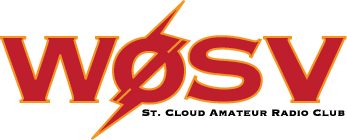![]() CMEC
CMEC
The St. Cloud Amateur Radio Club is heavily vested in Emergency Communications. We meet the first Thursday of the month @ 7:00 pm at the SCARC Clubhouse to hone our skills, refine our objectives, explore new ideas and procedures, conduct training, etc. To that extent, we have implemented CMEC – Central MN Emergency Communications, as a division of the Club. We encourage all Ham Radio Operators to declare their intent to help in time of need. Currently we are starting with basic online FEMA training classes, and will expand this training as time goes forward. To start with, we ask that all interested Hams start with IS-100b, IS-200b, IS-700b, & IS-800b. These can be found at FEMA Training, under Independent Study, or by simply searching Google. You will need to register for a FEMA Student ID before completing the short exam. Once you have completed the course and have your certificate, please email a copy of the .pdf to k9mp@w0sv.club. CMEC is comprised of four distinct groups:
Director of Emergency Communications: Rick Collins – KU5MC
Stearns County, MN
City of Saint Cloud, MN
SACOMM works directly with local agencies to help facilitate communications and necessary forms via HF/VHF/UHF radio when other modes of communication are unavailable. To that end, we have invested in extensive radio capabilities designed for this area in particular.
District Emergency Coordinator (DEC) Central MN Randy Welsand-WJ0L
Emergency Coordinator (EC) Stearns County MN
Emergency Coordinator (EC) Benton County MN
Amateur radio operators use their training, skills, and equipment to provide communications during emergencies When All Else Fails®. Hams serve our communities when storms or other disasters damage critical communication infrastructure, including cell towers, and wired and wireless networks. Amateur radio can function completely independently of the internet and phone systems. An amateur radio station can be set up almost anywhere in minutes. Hams can quickly raise a wire antenna in a tree or on a mast, connect it to a radio and power source, and communicate effectively with others.
The Central Minnesota Healthcare Preparedness Program is a healthcare coalition made up of members from Clinics, Hospitals, Long-Term-Care facilities, Emergency Management, Emergency Medical Services, Local Public Health Departments, Amateur Radio Operators, and many other agencies/organizations. Currently, once a month on the first Wednesday @ 1:00 pm, we run a NET to help make sure that the coalition is able to communicate when conventional communication modes are out of service.
The Saint Cloud Amateur Radio Club is the host of the Central MN Skywarn program under CMEC and the Director of Emergency Communications. Central MN Skywarn currently serves Stearns County via the SCARC Emergency Communications Repeater, Benton County via the Benton County Emergency Services Repeater, and Kandiyohi County (& parts of Renville, Meeker, Swift, and Chippewa Counties) on the Willmar Area Emergency Repeater. When the National Weather Service activates Central MN Skywarn, we deploy a network of trained spotters that report their observations via radio to our three Skywarn Nets located in the CMEC EOC so that we may pass possible life saving information to the National Weather Service.
For Members that have already paid their dues and wish to Join CMEC, click HERE, and it will open a fillable PDF Form. Fill it in, then on the top left click “Save As”, and make note of the location where you save it. Then Email the PDF to: W0SV@W0SV.club. If you have not already paid your dues, or are a New Club Member, Click HERE to go to the New/Returning Member form, fill it out completely, and follow the same procedure above to save and email the Document.
